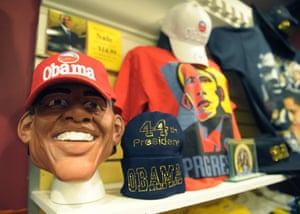Compared with studies that reported on the noteworthiness of treating statesmen and women like commercial brands, researchers and political/marketing professionals have barely given political branding repercussions attention. Here, for instance, is one beneficial analysis conducted by Staci M. Zavataro on that topic.
Brand Obama has been everywhere since 2008. Undoubtedly, he (and definitely his team and coaches) came up with a brilliant branding campaign that revolutionized the entire political marketing field. Nonetheless, referring to the President as a brand had many repercussions and implications.
“Barack Obama is three things you want in a brand-new, different, and attractive.”
The first branding repercussion is that this strategy turned the politician into a commodity. Indeed, one can fully recognize that politicians are now engaged in a marketing game. To illustrate, during 2008 and 2012’s presidential elections, hundreds of American stores sold shirts, hats, pins, etc. with President Obama’s face printed on them.
Although Obama was not the first president to recognize the commodification of the person and office, marketing professional considered him as the politician who “perhaps perfected the movement.” That is especially true since his team professionally used social media tactics to deliver a great Obama image. Not only that, but the former president launched his very own online store to fund his re-election! He literally took political merchandising, “once meant badly printed T-shirts, bumper stickers and mugs that fade in the dishwasher” (Cochrane, 2012) to an extremely new level where he sold “more than 200 items from kitchenware to designer clothes” (Lamb, 2012).

Aforementioned, marketers treat political brands as commodities; i.e. the latter go through the same traditional steps of product marketing:
- the marketers create the brand’s identity (brand image)
- the party approves this identity (company image)
- they win the primary elections (test market)
- they develop and launch a campaign (advertising and distribution)
- voters elect the candidate (market share)
- they stay in office (repeat sales)
“In this sense, political contests remind us that candidates are marketed as well as soap”!
Similarly, Obama went through the same process to develop his brand:
- In the first place, the brand started in an ad hoc manner built on what random staffers thought should appear
- In the second place, the campaign controlled the image and focused on a strong typeface and color scheme that appeared “perfectly American”
- Lastly, designers designed the logo with the ray pattern mentioned above. Nonetheless, it was tailored to a specific audience.
This means that “the Obama marketing really was no different than selling soap, as products usually are packaged differently when sold internationally.”

Want to know more about political branding repercussions? Stay tuned for our next blog post!
Sources
Zavattaro, S. M. (2010). Brand Obama: The implications of a branded president. Administrative Theory & Praxis, 32(1), 123-128. Retrieved from Brand Obama: The Implications of a Branded President on JSTOR
Cochrane, L. (2012). Obama merchandising madness: where will it end? The Guardian. Retrieved from https://www.theguardian.com/world/shortcuts/2012/mar/27/obama-merchandising-madness
Lamb, C. (2012). Barack Obama has launched an online merchandise store to fund his re-election. The Australian. https://www.theaustralian.com.au/news/world/barack-obama-has-launched-an-online-merchandise-store-to-fund-his-re-election/news-story/5637d6a9879f319c46b239534d5b46f3
Share with us your thoughts and don’t forget to check our Political Branding course
Follow us on social media
Facebook: Dr. Nadine Mounzer Karam
Instagram: @dr.nadinemounzerkaram
Twitter: @dr_nadinemk
TikTok: @nadinemounzerkaram
LinkedIn: Dr. Nadine Mounzer Karam
YouTube Channel: Nadine Mounzer Karam
And Stay Tuned!
NMK – Political Coaching and Communication


